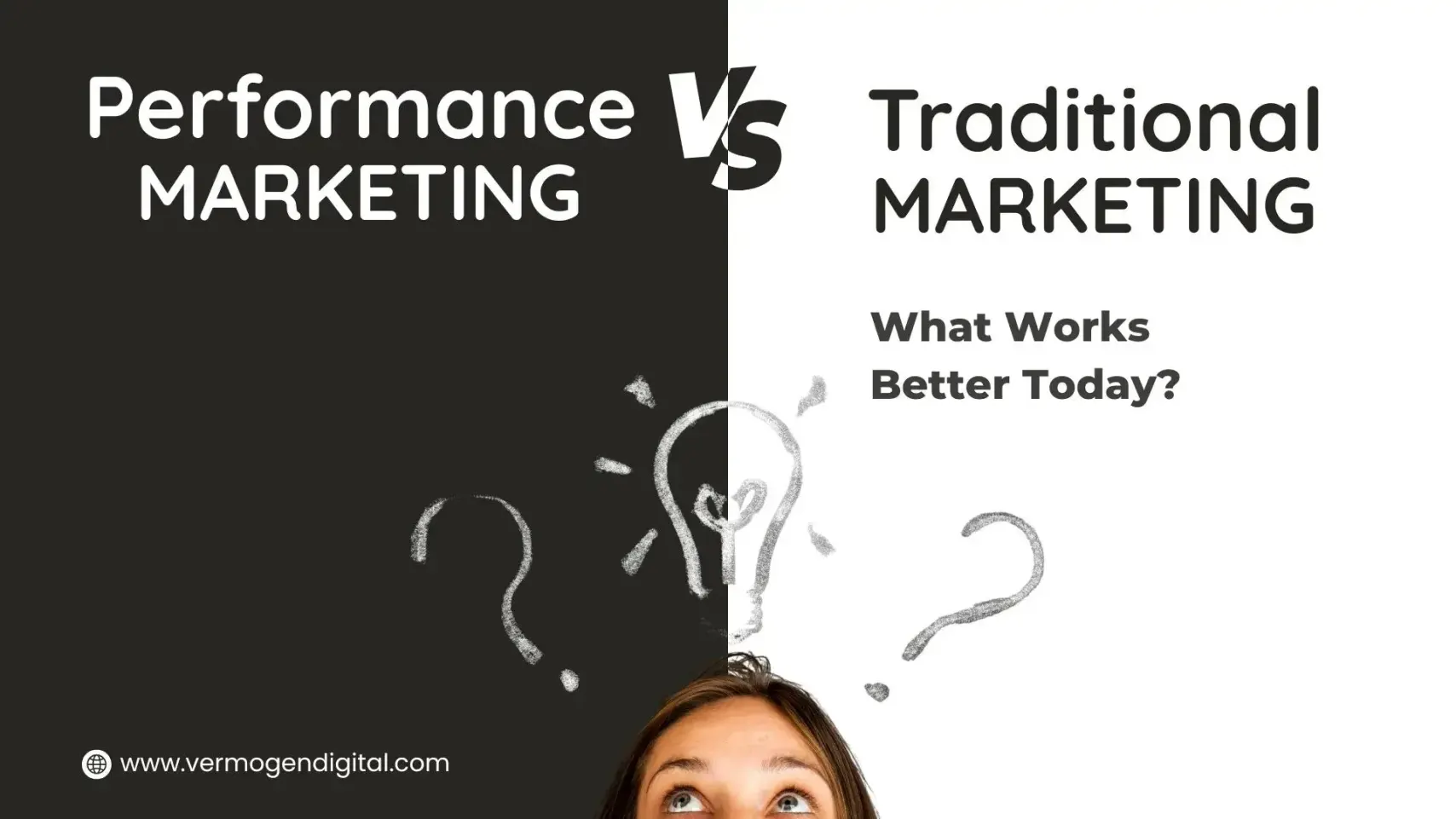Selecting the appropriate marketing strategy is crucial in the cutthroat business world of today. Performance marketing and traditional marketing are two main strategies that address distinct needs. Understanding how each works can help you decide where to focus your efforts and budget.
What is Performance Marketing?
Performance marketing is a results-focused approach where businesses pay only when a specific action is completed — such as a click, lead, or sale. It’s powered by digital platforms that allow precise targeting and real-time tracking.
In this model, every rupee is spent with a clear outcome in mind. If a campaign doesn’t deliver, it can be quickly adjusted or paused.
Examples include:
Pay-Per-Click (PPC) ads like Google Ads
Social media ads on Facebook, Instagram, and LinkedIn
Affiliate marketing
Search engine marketing (SEM)
Key benefits:
Measurable ROI through detailed analytics
Targeted audience reach
Flexible budgets and quick adjustments
Reduced risk of wasted spending
What is Traditional Marketing?
Offline advertising techniques that have been employed for many years are referred to as traditional marketing. It emphasizes visibility and brand awareness, frequently without quick results measurement.
For large brands or companies aiming to reach offline audiences, it depends on mass communication to reach as many people as possible.
Examples include:
TV and radio commercials
Newspaper and magazine ads
Billboards and posters
Flyers, brochures, and direct mail
Key benefits:
Strong for building brand trust and recognition
Effective for reaching audiences less active online
Creates a lasting impression through repeated exposure
Main Differences
Measuring and targeting are where the main differences lie. While traditional marketing concentrates on wide reach and brand recall without explicit performance metrics, performance marketing allows you to pay only for measurable results and provides real-time tracking.
Performance marketing campaigns are very flexible because they can be started and improved upon instantly. On the other hand, traditional marketing necessitates more extensive planning, and adjustments during a campaign may be costly or unfeasible.
Which Works Better Today?
The right choice depends on your business goals, target audience, and budget.
If you want quick, measurable results and have a specific audience in mind, performance marketing is more effective in today’s digital-first world.
If your aim is long-term brand building and you want to reach large audiences — especially those less active online — traditional marketing still has value.
Many businesses find that the best results come from combining both approaches. For example, you might run online ad campaigns to drive immediate sales while also using billboards or print ads to build brand familiarity over time.
Final Thoughts
In 2025, consumers are more connected and selective than ever. Performance marketing offers precision and accountability, while traditional marketing builds trust and recognition. The smartest strategy is often to blend both — using performance marketing for short-term conversions and traditional marketing for long-term brand strength.





